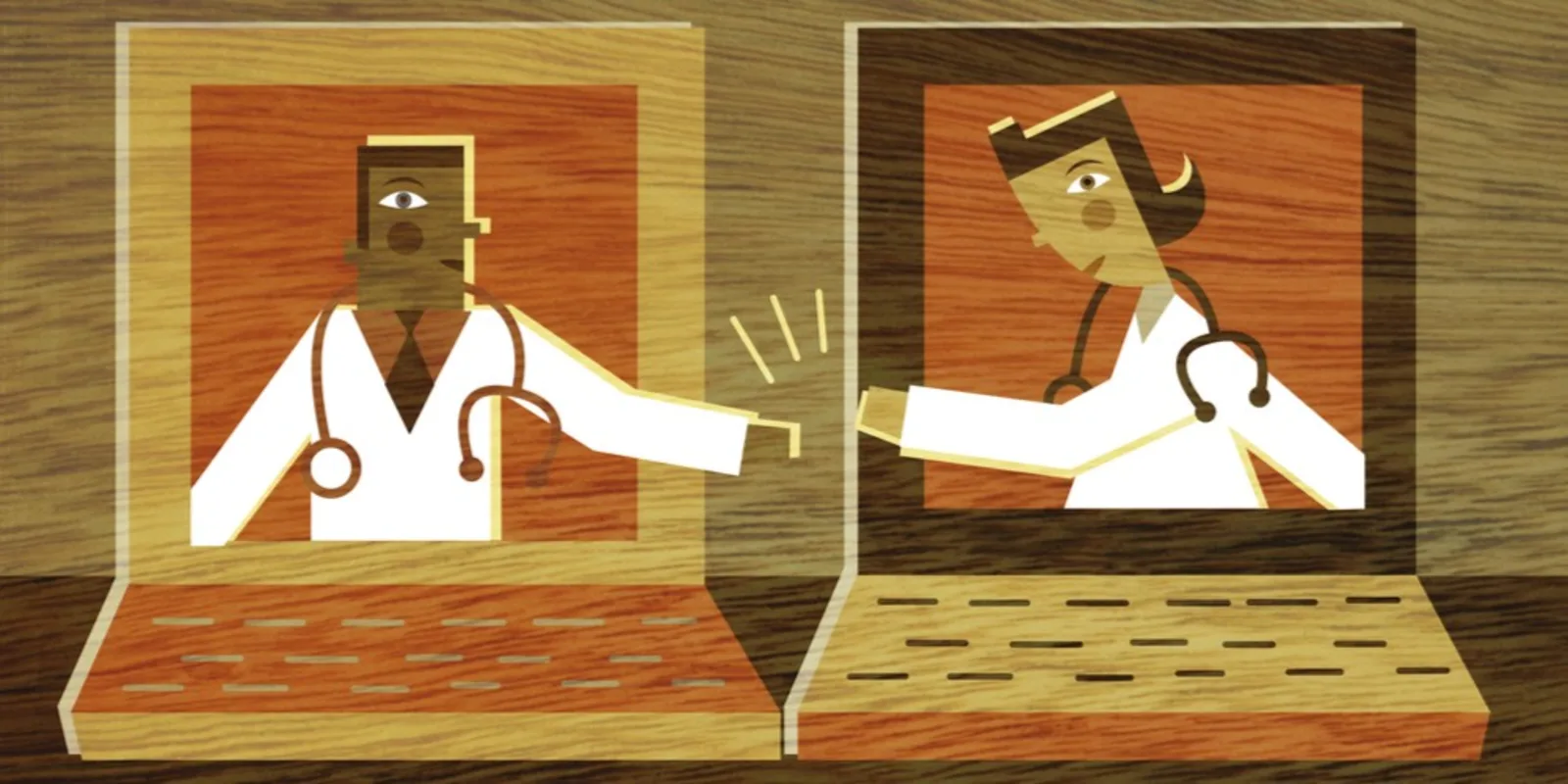
Healthcare continues to have an innovation problem. It’s not a shortage issue; there’s plenty of “innovation” out there, including heaps of formal innovation programs, piles of incubators, oodles of start-ups, tons of practice-changing clinical research. So, why do so many of physicians complain that change has not been good? Why has physician burnout become a national conversation? Why does the average physician feel left out of the innovation game? I would argue that the problem isn’t a lack of innovation; it’s a lack of a solid and broadly applicable implementation process.
Too often, physicians and other healthcare workers feel that innovation, or “progress,” is something that happens to them, rather than something that involves them. This is a failure of implementation. Too often, we are introduced to something new but aren’t given the time to evaluate and refine it. This, too, is a failure of implementation.
Physician Leadership
Many highly successful healthcare organizations in this country have a strong tradition of physician leadership: Mayo Clinic, Cleveland Clinic, Kaiser Permanente among them. It’s no surprise that these institutions tend to be viewed as the most innovative of their kind. Good innovation involves many (even mostly) non-physicians, but physicians themselves are in a special position to be a huge help, or a huge hindrance, to innovation and its implementation. Even the most exciting healthcare innovations are prone to flounder if physicians aren’t engaged.
Carl May describes an innovation implementation process called “normalization process theory.” In this process, there’s an initial phase that lays the groundwork for the innovation to take hold. The outcome of this phase is ultimately linked to physician leadership. Strong physician leaders who understand the importance of early physician engagement will include other physicians from the outset of the implementation process.
Here’s one reason why: in this early phase, physician leaders can themselves act as innovation pioneers, or they can equip others to be early adopters. As the innovation begins to be integrated into the daily workflow for these early adopters, others are watching. Those others are the physicians, nurses, and/or ancillary staff members whose acceptance and eventual integration will be needed if the innovation is to become fully embedded. Leaders, by being early adopters or by fostering the efforts of early adopters, lay the groundwork for its eventual implementation. If the leaders are respected, their actions will lend a sense of legitimacy to the innovation at hand, thus setting the stage for its eventual embedding. If leaders aren’t respected, or if they’re viewed as absent in this early phase, the innovation will lose legitimacy, and its eventual integration will be more difficult.
Physician Agency
Physician agency, i.e., empowerment to effect change, is what most of us did not have in residency. Residency is where many of us often felt overworked, overwhelmed, under-respected, and underpaid. However, we always knew it was finite and would eventually take us to a better place. When we’re done with residency, however, there is no “end.” So, when we find ourselves in a job where we don’t enjoy physician agency, we’re prone to a mindset I call “residency PTSD.” This isn’t a mindset that breeds cooperativity and satisfaction. Rather, it leads to isolation and, ultimately, to burnout.
If physician leaders and healthcare executives want to work with happy and fulfilled physicians, they need to allow and encourage physicians to be agents for change, or they risk a culture of residency PTSD. Agency is especially important during times of change, transition, or uncertainty — e.g., during implementation of novel or innovative measures. Knowing that we will have agency in such times leads us to feel that we work in a positive implementation climate, which in and of itself is a significantly positive predictor for successful implementation of complex innovations.
Successful implementation processes, in this manner, position the physician to be an implementation agent rather than a mere end user. Physicians are given the chance to make things happen, rather than to have things happen to them. Those in the former category will be engaged and satisfied; those in the latter category will suffer from implementation fatigue and eventually be at high risk for burnout.
Agency is the fact that explains why clinical innovation, rather than organizational innovation, seems to sit better with many physicians. Ask me to make a change to my clinical practice based on new research or findings? Sure, if it makes sense, I would be happy to do it. But ask me to check more boxes in the EMR, to see patients in a different office, or to see more (or less) patients in a given time frame…well, that tends to evoke a different response. The key difference is agency. In the clinical context, a physician feels empowered to make change, evaluate it, and decide whether or not it’s something worth internalizing and embedding. In other words, he or she has agency. Agency, however, doesn’t always accompany requests for non-clinical changes, and this is why non-clinical changes fatigue and frustrate so many of us.
Time, Time, and Time
Did I mention time? Too often, innovations are developed, and the ‘implementation’ or ‘go-live’ occurs in a matter of minutes. For example, a new office is opened and the physician (often a new hire) is sent to it with minimal orientation. Or, an EMR upgrade occurs and its impact on physician workflow is never formally evaluated. Or, a new policy in the operating room limits the physician’s autonomy in device or implant selection. These unsuccessful and often repetitive implementation cycles create a crucible for physician dissatisfaction and, at later stages, physician burnout.
What is done in this “implementation time” is what allows the innovation to become fully embedded. This is when an innovation becomes internalized. Once internalization occurs, the innovation can be appraised and reconfigured such that it becomes completely embedded. Fully-embedded changes could be defined as those where instead of saying, “How can we live with this?” we instead say, “How could we ever live without it?”
Of course, there is only so much time in the day, and many physicians have already filled every spare minute with clinical productivity. Especially in the non-academic world, very few of us have unscheduled time in the day. But it’s in this unscheduled time when we can reflect, react, and play around with innovation. It’s in this non-clinical time that we run through the later processes of implementation: evaluating, appraising, reconfiguring.
For employed physicians, I would argue that this non-clinical time be compensated. Physicians who own their practice directly reap the financial benefits of successful innovation and as such must carve out time to implement them successfully, even if it means a short-term income loss. The “upside” of the innovation is the physician’s compensation. However, most physicians (especially younger physicians) are employed and have an indirect cost-benefit relationship with innovation and its successful implementation. Therefore, employed physicians, especially those on productivity formulas, should not only be given time to implement, evaluate, and ultimately internalize the innovation, they should be compensated by their employer for it.
Lost clinical productivity is a direct loss of income for the physician. Unless there is a direct and obvious financial benefit to the individual physicians (e.g., a scribe to boost productivity), the financial risk of innovation should be absorbed by the employer rather than the employee.
Exciting Works
Implementation isn’t exciting in and of itself. It’s the “uncool” part of innovation. But, if the good ideas are going to make it into our daily routines, we need good implementation. As physicians, we will be happier at work if we make changes happen, rather than watch changes happen to us.
Being able to make changes happen requires a good innovation and implementation climate. In medicine, such a climate is underpinned by strong physician leadership, a culture of physician agency, and a commitment to protected and appropriately compensated non-clinical time.

Adam Kadlec, MD, is a board-certified urologist. He is a Doximity Fellow for 2017–2018, a clinical advisor to Doctella, and a past contributor to the NEJM Catalyst healthcare innovation blog.







